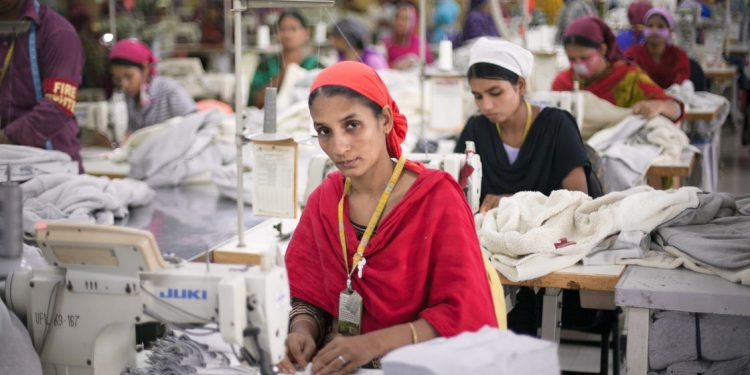Dhurjati Mukherjee
The MSMEs sector, regarded as the growth engine of the Indian economy, is contributing 5 per cent of the GDP. But due to the prolonged slowdown and the pandemic, most of the small and micro enterprises are struggling, given the recession in demand. Worse, of the over 55 to 58 million Micro, Small & Medium Enterprises, only eight million are registered! The need for reviving this sector has been a big challenge for the government, which has grown manifold within the past over four months.
The promotion scheme announced for these enterprises in the Atmanirbhar Bharat Abhiyan would obviously encourage a number of unregistered units to approach government for enrolment. However, the Prime Minister’s programme to help small businesses back on their feet through $40 billion of government-guaranteed loans is seen as “too little”. It may not be enough to save many companies in the sector. Around 85 per cent of MSMEs depend on informal sources of credit and funding this huge a percentage obviously requires more money.
Fortunately, the World Bank has stepped in, giving a $750 million package for medium and small enterprises in India, severely impacted by Covid-19 and the lockdown. The MSME Emergency Programme is intended to support incremental flow of finance to MSMEs and address the immediate liquidity and credit needs of some 1.5 million enterprises in the category. “The MSME sector is central to India’s growth and job creation and will be the key to the pace of India’s recovery, post Covid-19,” stated the Bank’s Country Director Junaid Ahmad. This funding will support the government’s initiative to protect the MSME sector by unlocking liquidity, strengthening NBFCs and small finance banks and enabling inclusive access to financing.
However, a major section has been reluctant to go in for new debt and would have preferred the government cutting the goods and service tax (GST) or waiving off interest on previous loans. In a letter to the Prime Minister, the Consortium of Indian Associations has stated that nearly 35 per cent of the 650 million small businesses could shut down in the absence of government support. And though the government is pressurising to dole out loans, businesses aren’t coming forward as demand remains tepid. Another aspect of the loan scenario is that lenders are either asking for increased paperwork or those in desperate need are being deemed ineligible.
Six out of 10 MSMEs in the creative sector – advertising, publishing, design and performing arts – have stopped functioning due to Covid-19. Over 50 per cent of event management companies have seen 90 per cent of their work cancelled during lockdown. A study titled ‘Taking the Temperature Report’ released on July 7 provided a snapshot of the situation beginning March-end till June-end. The data across found that MSMEs and self-employed groups make up 88 per cent of the sector and have been worst affected.
Though the lockdown started from March-end, the slowdown, which affected mostly the small and micro enterprises, had started since last August. The revival of these units is a big challenge–primarily due to cost factor, their products are not competitive. Besides, they are also lacking in quality and reliability.
Though the government has reposed a lot of faith in these small enterprises, their becoming productive and competitive is in a haze. To start with, there is need for guidance from the government – not just on finance – but on possible areas of diversification in manufacturing and in providing technology partners. These could include assistance in foreign tie-ups for technology support.
The Ministry of MSMEs had developed around 25 Technology Centres (TCs), of which 15 are expected to be operational shortly, but there is need for more. These centres play a vital role to assist MSME ventures via access to advanced technologies, technical advisory support and talented labour which offers technical skill development to youth at different levels, extending from school dropouts to graduates and engineers. These technology centres provide a variety of training in various fields such as diploma in tool & die-making, advanced embedded technology, Artificial Intelligence & Internet of Things, Fragrance & Flavour creation, Footwear Manufacture and Design.
What is a vital development is the government’s resolve to give more orders to these units. Plus, Amazon has reportedly decided to invest $1 billion in digitising small and medium businesses in India and is expected to export Indian made goods worth $10 billion by 2025. These, however, may not be sufficient as units do want to emerge big and strong. What is necessary is to equip them, especially with the right technology, which could be made available from the IITs and other organisations engaged in industrial research and development.
It needs to be noted that manufacturing technologies in each and every sector has to be formulated through an action plan, which should be set up at the national level. Mere slogans of self-reliance by political leaders would be of no value unless effective measures are taken by the government in consultation with the chambers of commerce and experts drawn from industry and research organisations.
What needs stress is that these enterprises account for 33 per cent of merchandise exports and thus technology and financial support at this time is imperative. Foreign tie-ups are essential to upgrade quality of products and also ensure large-scale marketing in different markets.
It can also be said that despite numerous roadblocks, the SME sector has performed well. There are distinct barriers to innovation, one of them being government policy. While it does aim to facilitate growth of SMEs by promoting various schemes and programmes to facilitate innovation through its distinct institutions, impetus needs to be given to evolve a realistic action plan in consultation with experts and state governments. The scale of operations in both public labs and private research institutions needs to be revamped for greater outreach and support.
Another major aspect is that programmes such as Cluster Development need to be expanded to provide greater access to more individual firms within the cluster. Modernisation and technology upgradation along with innovative methods of capacity building and marketing of products are necessary.
Finally, a holistic and separate innovation policy for the SME sector can help promote innovation. The onus lies on the government, which needs to prove its resolve of self-reliance through effective development of the small and micro sector. –INFA






































